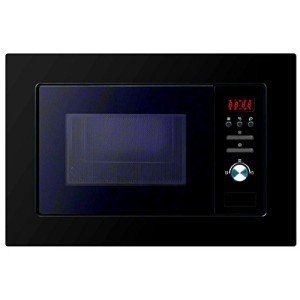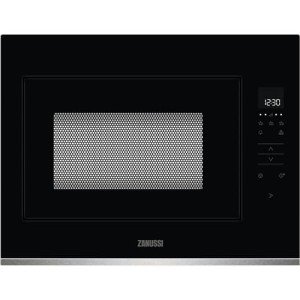14 Smart Ways To Spend On Leftover Microwave Built Budget
페이지 정보

본문
 How is a Microwave Built?
How is a Microwave Built? Microwaves have taken household convenience to an entirely new level. They are designed to fit inside wall cabinets or on top of kitchen islands. They are also constructed with a variety of materials.
Microwaves have taken household convenience to an entirely new level. They are designed to fit inside wall cabinets or on top of kitchen islands. They are also constructed with a variety of materials.The cavity magnetron tube that emits microwaves was first invented in 1940 at Birmingham University in England. Percy Spencer realized that this device could heat food when he watched eggs pop and corn cook.
Raw Materials
Microwave (MW) heating is growing in popularity in the field of material processing due to its inherent advantages like speedier heating and uniform heating. Its non-contact nature, low energy consumption, and speedier heating are additional advantages. The MW heating process is utilized for different engineering materials, including ceramics, metals, polymers and composites. Recently, it has been used for bulk metal joining, the cladding of metallic powders that are not similar on metallic substrates, and casting.
Metal is the main raw material used in microwave ovens. It is mined from the earth through processes that consume lots of energy and release greenhouse gases. Plastic is another important material, and it comes from organic compounds like cellulose and crude oils. Plastic production produces indirect greenhouse gases through the use of fossil fuels to generate heat and electricity, and direct emissions from chemical processes like the production of phthalates and Bisphenol A.
Once the raw materials are acquired, they are subjected to rigorous manufacturing and quality controls to ensure they are in compliance with federal standards. In this process, a range of emissions and waste are produced, including oils, solvents dust, fumes and dust. The final product will then be delivered to retailers and ultimately to the consumer. Most microwaves are shipped by truck. This requires a lot of energy and creates greenhouse gasses.
After purchasing a Built-in Microwaves Combination microwave oven and grill - wikimapia.Org,, it is typically used for a long time before it becomes obsolete and is removed. Microwaves have a short lifespan, so recycling and disposal options are crucial to reduce waste and emissions.
Design
Microwave ovens cook food by emitting electromagnetic radiation in the microwave region (300 MHz to 300 GHz). The radiation passes through the microwave oven and cooks food. The microwave ovens are designed to avoid harmful effects of radiation. This includes arcing, which could damage the oven or the food inside. There are many different types of microwavable ovens on the market. Each has its own pros and cons. Think about the size of your kitchen, its fit and the cooking requirements when choosing the right microwave. For instance, if you have a limited counter space, you might want to consider an double integrated oven with microwave model that can be tucked away the appliance away.
The design of a microwave oven starts with the purchase of raw materials. These are then processed into the various parts. The oven's cavity and frame are two of them, as are the turntable, glass tray and magnetron tube with capacitor and transformer. The casing is typically made of metal, like galvanized steel, aluminum or brass.
The microwave is packaged and tested following assembly. The packaging is typically composed of recycled materials such as paper and cardboard, or recyclable plastics, such as acrylonitrile butadiene styrene polyethylene terephthalate, polyethylene terephthalate, and polyvinyl chloride.
The new microwaves are then loaded onto transport equipment like planes, ships or automobiles. These tools use fossil fuels to convert chemical energy into mechanical energy, which is used to move the microwaves on their way to the customers. After the microwaves have been delivered, they are plugged into the users. This is the stage of the life cycle where it consumes the most energy and generates the most emissions, including carbon dioxide.
Manufacture
Microwaves are a popular appliance in modern kitchens. They are well-known for their speed and ease of use but what exactly makes the microwave function? To find out, let's take an overview of the process of putting together this essential appliance in your home.
The basic materials required to make a microwave oven include plastic components, metals and other electrical parts. Some of these materials are found in the earth, but others require processing. The manufacturing process also involves the use of energy, resulting in the emission of greenhouse gases. This manufacturing stage is the primary cause of the environmental impact of microwaves.
In the manufacturing phase, the majority of the material is assembled by automated machines. The assembly takes place in a factory where workers are placed on a conveyor. Workers use a machine for making sheet metal into the door's outer casing and. After the frame is constructed it is washed with an alkaline cleaner to remove dirt and oil. It is then put together using bolts and screws to create a safe frame for the cavity inside.
Magnetrons and other components can be added after the chassis has been formed. The magnetron emits electromagnetic radiation, which causes water molecules to increase in temperature. In this phase there could be dangers to safety, like the risk of plasticizers leaching into food products and the risk of the oven exploding if it is empty.
Once the microwave is fully constructed, it goes through extensive testing and inspection to make sure that it meets federal standards. After this step the microwave is then packaged to be distributed to customers. The transportation of microwaves from the factory and retailers can result in a significant environmental burden. The equipment used to transport and transmit microwaves are powered by fossil fuels that release carbon dioxide and greenhouse gases into the air.
Testing
Microwaves are electromagnetic waves that form part of the electromagnetic spectrum. The spectrum consists of various types of energy that travel through space, such as radio waves, visible light, infrared energy, and ultraviolet radiation. Microwaves are able to heat food through a process called microwave heating. It uses electromagnetic radiation to cause water molecules in the food to move and rotate. This causes the food to be heated, without heating the air around it or changing the physical structure of the food.
Microwaving food is a safe method to cook food because radiation from microwaves doesn't harm the food's cells, nor does it make it radioactive. However, those who have pacemakers should stay clear of microwaves as the radiation could disrupt the electrical signals of certain electronic cardiac devices. This issue has been resolved through the use of special shielding.
Bisphenol A (BPA) along with the phthalates and other chemical compounds found in microwave ovens can be detrimental to your health. Several studies have shown that BPA is able to leach from plastic containers into food, and phthalates are believed to be linked to an increased risk of reproductive problems. In addition microwave radiation may cause damage to the eye tissues and lead to cataracts.
The procedures for testing in today's NOPR requires that microwave oven built in combo ovens are tested in their microwave-only cooking mode as well as convection-microwave cooking modes to measure the energy consumption of the appliance in a variety of scenarios. The test procedure uses a mixture of water and basic food ingredients, which are designed to mimic the actual food that are reheated in the microwave. These mixtures are poured into glass containers made of borosilicate that is heated in the microwave oven, and then tested for thermal efficiency.
Packaging
Many microwave-ready meals employ a special packaging process called modified atmosphere packaging (MAP). This method of packaging makes use of oxygen-eliminating gases to extend the shelf-life of pre-cooked foods. These gases are often composed of carbon dioxide, pure oxygen as well as nitrogen, and operate by removing oxygen from the food's environment. This prevents spoilage and extends the shelf life of the meal for the consumer.
The MAP process can also be employed for meat products, such as frozen steaks, chicken wings or beef patties. The packages are made up of a nonwoven film, which absorbs moisture and helps keep the food moist and fresh for a longer period of time. This type of packaging also reduces waste by reducing the amount of water and air that is lost during the heating process.
When selecting a microwave, consumers should think about its size as well as its power level and other features such as sensor cooking or defrost settings. These features can help make cooking more convenient, but it's important to consider how often they will be used in order to avoid spending money on a microwave that has additional features that will remain in use for built-in microwaves the majority of the time. The design of the microwave is a further factor to consider, as certain models come with a flush-built design that seamlessly integrates into the cabinetry of the present.
- 이전글A Secret Weapon For Poker Online Free 25.02.04
- 다음글What's The Job Market For L Shaped Bunk Beds For Kids Professionals Like? 25.02.04
댓글목록
등록된 댓글이 없습니다.
